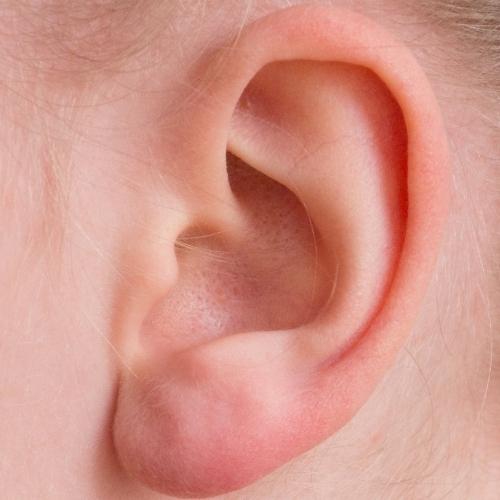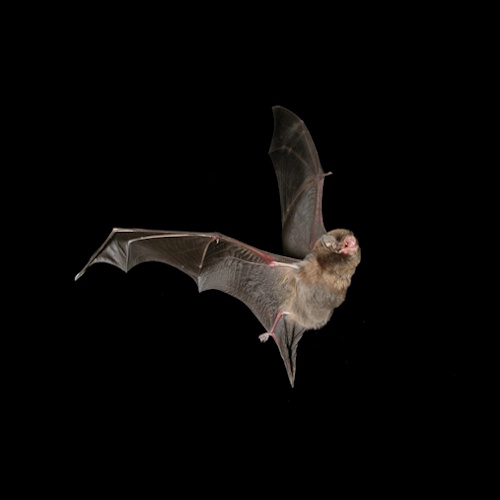Hearing loss is a common phenomenon as mammals age, often leading to diminished quality of life. In humans, this condition, known as age-related hearing loss (ARHL), typically starts with difficulty hearing high-frequency sounds and gradually progresses to affect lower frequencies. However, a recent study on echolocating big brown bats (Eptesicus fuscus) reveals a fascinating deviation from this norm.
These bats, despite their long lifespans, exhibit minimal signs of hearing loss, making them an intriguing model for studying the preservation of auditory function in ageing mammals.
Hearing in echolocating bats
Echolocation is the primary means by which many bat species navigate and hunt for prey. By emitting high-frequency sound waves and interpreting the returning echoes, bats can detect obstacles, locate prey, and maneuver through complex environments, often in complete darkness. This ability relies heavily on their auditory systems, which must remain highly sensitive and accurate throughout their lives.
For most mammals, including humans, the auditory system deteriorates with age, leading to progressive hearing loss. This deterioration often starts with the loss of hair cells in the cochlea, the sensory organ responsible for converting sound waves into nerve signals.
As hair cells die, the ability to detect high-frequency sounds diminishes, and this loss gradually extends to lower frequencies. Over time, the accumulation of damage to auditory nerve fibers and other cochlear structures further exacerbates hearing deficits.
Given the importance of hearing for survival in echolocating bats, it stands to reason that these animals would be under strong evolutionary pressure to maintain their auditory function throughout their lifespan.
This is particularly true for species like the big brown bat, which rely almost exclusively on echolocation to capture prey in flight. The recent study led by Grace Capshaw and her colleagues sought to investigate how well these bats preserve their hearing as they age.
Age-related hearing in big brown bats
The study involved measuring hearing sensitivity in both young and ageing big brown bats using auditory brainstem responses (ABRs) and distortion product otoacoustic emissions (DPOAEs). ABRs measure the electrical activity in the auditory nerve and brainstem in response to sound stimuli, providing a snapshot of the overall health and function of the auditory system.
DPOAEs, on the other hand, assess the functionality of outer hair cells in the cochlea, which play a crucial role in amplifying sound and improving hearing sensitivity.
The researchers captured wild big brown bats, estimated their ages using DNA methylation profiling, and then categorised them into young (1.2 to 5.9 years old) and ageing (6.8 to 12.5 years old) groups. The bats were subjected to a series of sound stimuli, and their auditory responses were recorded and analysed.
The results were striking. The ABR-derived audiograms for young and ageing bats were nearly identical, indicating that hearing sensitivity remained stable across the age groups. The study found no significant differences in auditory detection thresholds between the young and ageing bats, suggesting that the older bats retained their ability to hear across the full range of frequencies crucial for echolocation.
Additionally, the DPOAE measurements showed no significant age-related decline in outer hair cell function, further supporting the conclusion that the big brown bats' hearing remains robust well into old age.
What protects Big Brown Bats from hearing loss?
The study's findings raise important questions about what mechanisms might protect big brown bats from the hearing loss typically seen in other mammals. One possibility is that the bats' auditory system has evolved specific adaptations to mitigate the effects of ageing and noise exposure, both of which are known to contribute to ARHL in other species.
Interestingly, the study noted that while there was no significant loss of hair cells or auditory nerve fibers in the ageing bats, there were subtle changes in the cochlear structures. For instance, the size of presynaptic ribbons, which are essential for transmitting sound information from hair cells to nerve fibers, was slightly reduced in the older bats.
However, these changes did not translate into a measurable decline in hearing sensitivity, suggesting that the bats' auditory system may be particularly resilient to the cumulative effects of ageing.
Another potential factor is the bats' natural resistance to oxidative stress, a key contributor to ageing in many organisms. Oxidative stress results from the accumulation of reactive oxygen species (ROS), which can damage cells and tissues over time.
Many bat species, including the big brown bat, have been shown to possess enhanced antioxidant defenses, which may help protect their cochlear cells from age-related damage.
Broader implications for ageing research
The discovery that big brown bats maintain their hearing sensitivity into old age has significant implications for ageing research. As humans continue to live longer, age-related conditions like hearing loss are becoming increasingly prevalent.
Understanding the mechanisms that allow bats to avoid these issues could provide valuable insights into potential therapeutic strategies for preserving hearing in humans.
For instance, if the molecular pathways that protect bat cochlear cells from ageing and noise exposure can be identified, it might be possible to develop treatments that mimic these effects in humans.
Additionally, the study highlights the importance of considering species-specific adaptations when studying ageing, as different animals may employ unique strategies to cope with the challenges of growing old.
Future directions
While the current study provides compelling evidence that big brown bats are resistant to ARHL, it also opens up several avenues for future research. One important area of investigation will be to examine whether these findings hold true in bats that have reached the upper limits of their lifespan, which can extend up to 19 years in the wild.
It will also be crucial to explore the role of the stria vascularis, a structure in the cochlea that helps maintain the ionic balance necessary for hearing, to determine if it shows any signs of age-related degeneration in older bats.
Furthermore, the study suggests that the bats' auditory efferent system, which helps protect the cochlea from damage by modulating its response to sound, may play a role in their resistance to hearing loss. Investigating how this system functions in both young and aging bats, particularly in those exposed to high levels of noise, could provide further insights into the protective mechanisms at work.
In conclusion, the big brown bat's remarkable resistance to age-related hearing loss offers a fascinating glimpse into the potential for preserving sensory function in ageing mammals. As researchers continue to uncover the secrets of these long-lived auditory specialists, they may pave the way for new approaches to combating hearing loss and other age-related conditions in humans.
The study is published in bioRxiv. It was carried out by Grace Capshaw and team from Johns Hopkins University.







